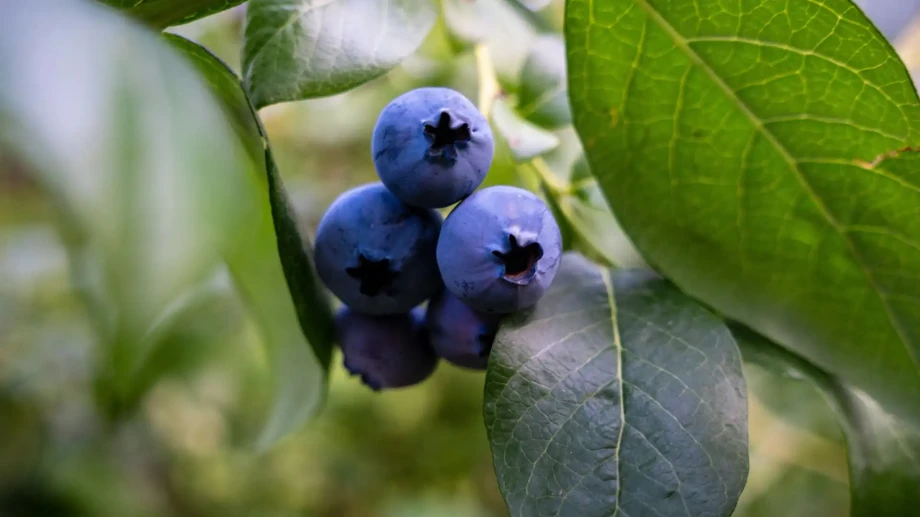Until thirty years ago, blueberries were almost absent from the diet of British consumers. Today, however, they represent one of the most dynamic segments of the fresh produce sector: according to the latest data, more than half of UK households consume them regularly and the domestic market has exceeded 53,000 tonnes per year.
A very rapid evolution, which has transformed an imported product into an increasingly strategic sector also for local production.
The impact is so significant that the prestigious newspaper "The Sunday Times" dedicated an 8-page special to blueberries titled "How did blueberries become so popular?".
The arrival of blueberries in British supermarkets dates back to the 1990s, when large retailers marketed them as “superfoods,” easy to consume, versatile and rich in health benefits.
Their “snackability” – the ability to be eaten at any time without preparation – was a key factor in winning over new audience segments, from children to the over-55s, helping to create a now well-established consumption habit.
Impact and dependence on imports
The market impact is evident. Chains such as Marks & Spencer report blueberry revenues higher than those generated by apples and pears combined, while at Aldi, packages sold exceed those of oranges by more than three to one.
Sales growth over the past three years has exceeded 40%, and estimates indicate the sector could surpass one billion pounds (about 1.18 billion Euros) by the end of the decade.
If the consumption boom was driven by imports – with the United States and Canada as historic suppliers and Peru becoming the world’s leading exporter in just a few years – the growing dependence on foreign sources has shown its weaknesses.
In 2023, for example, drought reduced Peru’s harvest by 22%, highlighting the vulnerability of a system heavily dependent on supply from a single country.
Domestic production and technological innovation
In this context, the growth of domestic production is significant. The most emblematic case is Hall Hunter Farms in Surrey, which alone covers 43% of the UK supply.
The company has grown from 1,000 tonnes in 2008 to over 2,500 today, aiming to reach 4,000 tonnes thanks to new plantations and varieties better suited to the local climate.
The adoption of advanced technologies – automated harvesting machines with a capacity of 600 kg/hour and selection systems based on artificial intelligence – represents a further step toward competitiveness.
The 2025 season confirmed the potential of the sector. An exceptionally warm and bright spring resulted in larger fruits and more uniform ripening, with a 25% production increase and a 9% year-on-year rise in sales.
Hall Hunter has already automated 10% of the harvest and plans to reach 30% by next year, while strawberries and more delicate berries are still harvested manually.
The historical and cultural roots of success
The rapid rise of blueberries is not only a matter of modern consumption. Their commercial cultivation is relatively recent: until the early 1900s they were consumed only in the wild in North America, where they grew spontaneously and spread through rhizomes, birds and wild animals.
The turning point came in 1911, when grower Elizabeth White and botanist Frederick Colville began systematic cross-breeding of wild plants in New Jersey. In 1916, the first cultivated harvest in history was collected.
For decades, blueberries remained a virtually unknown fruit in Europe, perceived as typically American (they appeared mainly in muffins or chewing gum).
Only in the 1990s, with the arrival of the North-West American Blueberry Commission and the first tastings in British supermarkets, did active promotion of their consumption begin.
Since then, thanks also to the health narrative of “superfood”, blueberries have found a stable and long-term market position.
Future challenges: labor, mechanization and premiumisation
Another key issue concerns labor costs. Blueberries require a lot of seasonal labor: at Hall Hunter’s fields, for example, dozens of migrant workers from non-EU countries operate, often on six-month contracts.
Manual harvesting is still necessary to maintain high quality standards, but accounts for over 60% of production costs.
Hence the strong interest in mechanization: tested prototypes can harvest hundreds of kilos per hour, although with a 20% loss rate due to unripe or damaged fruits.
The challenge will be to make these machines increasingly selective and introduce varieties with plant architecture better suited to automated harvesting.
At the same time, the phenomenon of premiumisation is developing. Retailers segment the offer into three ranges – economy, standard and premium – differentiated mainly by size.
In higher-end segments, such as Tesco Finest or M&S Taste the Difference, only fruits of 18–22 mm in diameter are accepted, allowing producers to obtain a premium of 3 pounds/kg (about 3.54 Euros/kg) over the average.
Even if size does not always correspond to better taste, the trend toward larger varieties and visually perfect fruits now seems well established.
The race for British varieties
The long-term challenge is varietal. Today, almost all the cultivars planted in the UK come from international breeding programs, mainly in Florida, with royalties paid on plants or harvested kilos.
Two recent innovations mark a turning point: Orb, selected by BerryWorld Plus, and Highland Charm, developed by the James Hutton Institute in Scotland.
Both have been registered with the CPVO as new British varieties, featuring frost resistance, early ripening and compatibility with mechanical harvesting.
If these innovations deliver on their promises, they could extend the national production season from six weeks to three or four months, significantly reducing dependence on imports.
For the British fruit and vegetable sector, this would represent not only a leap in food security, but also a competitive advantage in terms of sustainability and profitability.
Strong prospects
The success of blueberries in the UK is a combination of cultural, commercial and technological factors: from the health narrative of the “superfood” to varietal innovations, from the push of modern distribution to investments in automation.
The trajectory is clear: blueberries are no longer a passing trend, but a product here to stay.
For players in the fruit and vegetable sector, they now represent one of the most interesting segments for profitability, innovation and medium- to long-term growth prospects.









